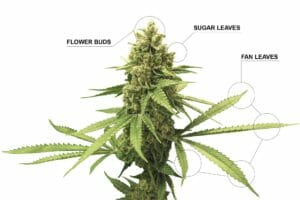Stages 05, 06, 07: Medicinal Cannabis Trimming, Drying & Milling Stages

Medicinal Cannabis | Trimming, Drying, Milling
The 5th, 6th and 7th stages of the medicinal cannabis production process are medicinal cannabis trimming, drying and milling. These stages happen after the cannabis flower buds have been harvested.
The featured image is from one of our clients, Medigrowth and respected suppler of medicinal cannabis.
GMP and Advice on Medicinal Cannabis Trimming, Drying and Milling | International Expert Consultants
Depending on your final product, this may be where you need to implement Good Manufacturing Practice (GMP) as the quality of the final medicinal product will be impacted by the drying and milling processes. If you are planning to sell the dried, milled cannabis this will be the case. Growing and processing an active ingredient for a medicinal product is regulated by the Australian Therapeutic Goods Administration (TGA), who will require GMP to be in place.
360° panorama – drag the cursor around the image to view the layout, for full screen choose the icon in the bottom right corner.
Starting up a medicinal cannabis cultivation business or medicinal marijuana production and export business?
PharmOut’s cannabis consultants can assist start-up firms with licensing applications, medicinal marijuana processing and regulatory requirements for GMP / EU GMP (PIC/S). We also help with expansion projects, equipment, data integrity systems and other quality management system upgrades.
Our pharmaceutical facility design architects, cleanroom validation, testing and processing engineers are experts in assisting cultivators and medicinal cannabis manufacturers with environmentally-minded designs for efficiency and GMP compliance. Contact PharmOut with your enquiry or view the medicinal cannabis cultivation support pages.
What happens after the cannabis has been harvested?
Harvesting sees the top part of each flowering stem of the plant being cut off and taken to the drying room.

Trimming of Medicinal Cannabis
In the drying room, the trimming process involves removing the fan leaves, sugar leaves and any other extraneous parts of the plant.
The stems are left with just the flower buds on them.
This is manually intensive, and thus high cost, process unless you invest in automated trimmers.
Drying of Medicinal Cannabis Crops
The remaining stems and flowers are then hung upside down on moveable racks or laid on trays. They remain like this in the drying room for several days.
Tip: Conviron has a useful 360° image of a drying room on their website.
The process is similar to drying tobacco – the humidity and temperature of the room must be controlled to achieve the optimum drying rate and to achieve the desired final moisture content of the buds. The drying process also removes unwanted pigments, chlorophyll and stops mould formation. It has a critical impact on the quality of the final product, so must be carefully controlled.
Larger operations may choose to invest in drying tumblers. They reduce the drying process from days to a few hours.
Milling
Milling of the dried cannabis is usually done in the drying room. The milling process breaks the cannabis into small pieces of a uniform size, ready for the extraction process.
Milling can be done using a wet or dry process. A wet mill will only be used if extraction of the active ingredients from the cannabis is to be done immediately – usually on the same site. Dry milling, using mill (e.g. a Fitzmill) or pulveriser, produces bags of dried product, which can be stored for later extraction or processed into medicinal products.
Regulations
Regulations differ from country to country and continually evolve, this page was written specifically about the Australian Medicinal Cannabis regulatory framework.
The propagation of cannabis plants is regulated by the Australian Office of Drug Control. You must hold a licence from them to cultivate cannabis (they control the plant during it’s lifecycle). Once the plant has been harvested and moves into the production of the final medicinal product then the Australian Therapeutic Goods Administration (TGA) is the regulator or a comparable regulator. Typically, if your final product is a bud or flower, this part of the manufacturing process must comply with the current Good Manufacturing Practice guidelines. These rules are designed to ensure the safety and efficacy of all pharmaceutical drugs sold in Australia. The rules cover everything from facility design through production processes to the packaging, labelling, storage and transport of the final drug product.
Cannabis Drying | Engineering and Medicinal Cannabis Drying Facility Designs
When designing the drying room of a medicinal cannabis facility, the following are important considerations:
- Environmental controls- controlling the humidity, temperature and airflow within the drying room is critical. This should be automated with systems from companies such as Priva and (Argus) Conviron.
- Manual handling – automating as much of the labour-intensive tasks as possible will reduce operating costs. This is critical in Australia, where labour costs are high.
- Regulations – should the drying process be governed by GMP principles? This decision is critical and should be taken prior to start of facility design. It’s very expensive to retrofit GMP later on.
Services PharmOut offers:
PharmOut can design a complete turn-key solution, or you may need help with only specific areas, such as:
- Determining which regulations cover the drying and milling process
- Selecting equipment and suppliers
- Designing the drying room
- Implementing the documentation and processes needed to meet GMP regulations.
Read our TOP 10 BLOGS by Cannabis Industry Experts
Get in Touch
If you would like to learn more about our services, request a quote or ask any questions please fill out our enquiry form here.

